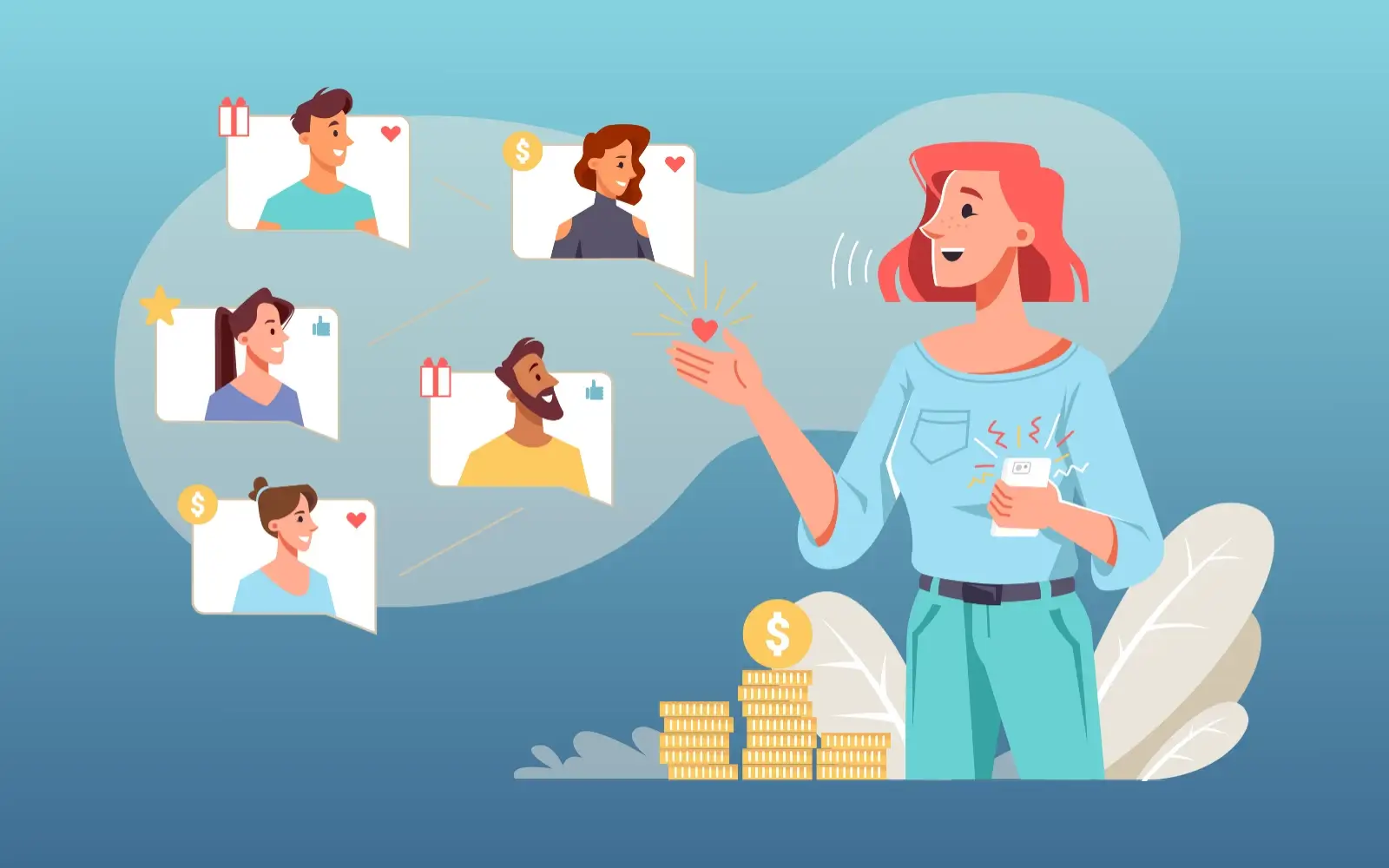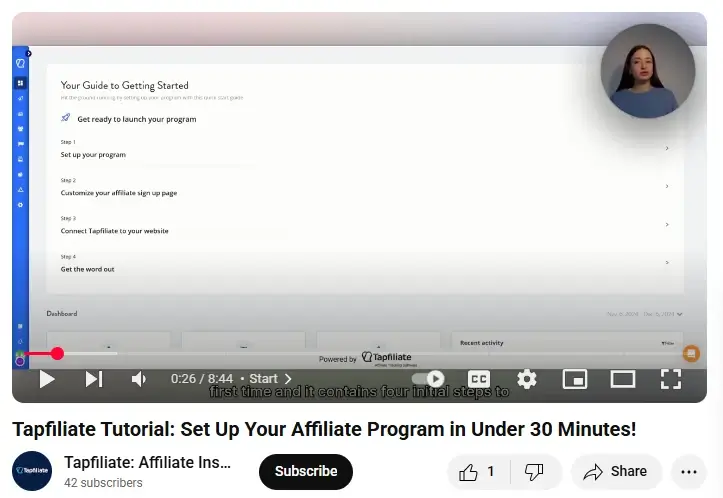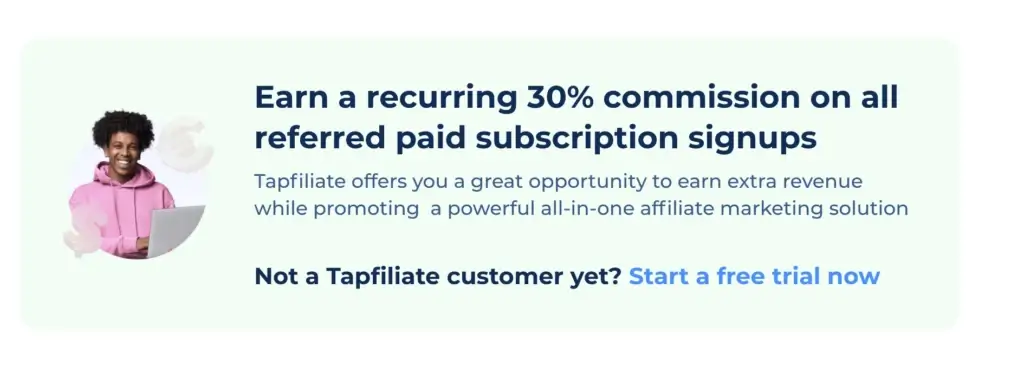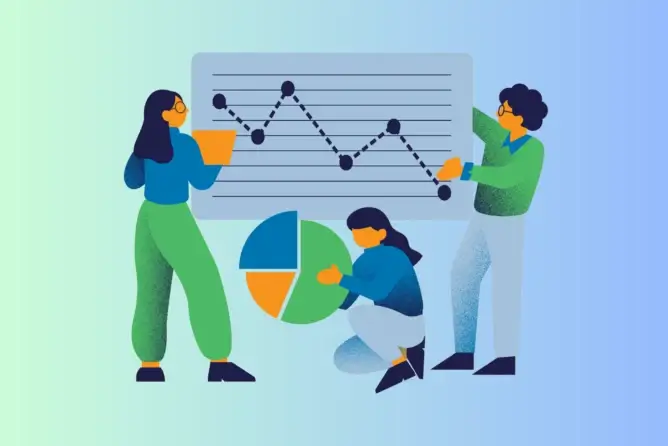The Complete Guide to Setting Up Your First Referral Program in 2025

In this article
What Is a Referral Program (and Why It Matters in 2025)?
Is Your Business Ready for a Referral Program?
How to Set Up a Referral Program
What Not to Do When Starting Your Referral Program
Next Steps: Launch, Learn, Scale
Final Thoughts
Referrals aren’t new, but in 2025, they’ve become one of the smartest ways to grow your business in a world that’s tired of traditional ads. As digital ads lose their edge and costs keep rising, customers are tuning them out.
What still works? Real people sharing real experiences. A well-designed referral program harnesses that power, enabling your business to scale faster, earn trust naturally, and attract loyal customers without overspending on ads.
If you’re already seeing some traction, whether it’s steady sales, returning customers, or strong customer feedback, it might be the perfect time to launch a referral program.
This referral program guide 2025 is meant for businesses like yours that are in the middle or bottom stages of the marketing funnel. That means you’re not just looking for awareness; you’re focused on converting leads and keeping customers happy.
In a market where trust drives decisions, learning how to set up a referral program could be the smartest move to fuel sustainable success and deepen customer loyalty.
What Is a Referral Program (and Why It Matters in 2025)?
When happy customers spread the word, your business grows naturally, and that’s exactly what a good referral program helps you do. It’s a strategy where you reward your existing customers — often called “referrers” — for bringing in new ones, known as “referees.”
The rewards can vary depending on your business, from discounts and store credit to free products, cash, or even exclusive experiences. It’s a win-win for both you and your customers: they get something valuable in return, and you gain new leads or sales without the usual marketing costs.
In 2025, people are exposed to more marketing messages than ever before. People see ads all the time, and most have become quite adept at ignoring them, whether they’re scrolling, searching, or watching videos. What cuts through all that noise is a personal recommendation.
According to Nielsen, 92% of people trust referrals from people they know more than any other type of advertising. That kind of trust can’t be bought — it has to be earned, and that’s where a referral program shines.
Referral programs take advantage of the natural human habit of sharing good experiences. When someone finds a product or service they love, they’re likely to tell their friends about it. A referral program encourages and rewards that behavior, turning your satisfied customers into an enthusiastic and cost-effective marketing team. In today’s competitive market, that kind of advocacy is more valuable than ever.
Is Your Business Ready for a Referral Program?
Before diving into a referral program, take a moment to check if your business is truly prepared to handle more attention, more customers, and more demand.
While referral programs can be incredibly effective, they work best when your business has a solid foundation. That means more than just having a great idea — you need happy customers, good systems, and the ability to handle growth.
Once you’re confident in your readiness, you can focus on how to set up a referral program that works for your business goals.
Let’s kick things off with a quick gut check — ask yourself these important questions:
- Do you have a product or service that people genuinely love and are willing to talk about?
- Are your existing customers engaged and satisfied with their experience?
- Can your operations, customer support, and fulfillment processes handle a sudden increase in demand?
- Do you have tools or a system in place to track referrals, rewards, and redemptions accurately?
If you can confidently answer “yes” to these questions, you’re in a great position to launch a referral program.
Being in the middle or bottom of the funnel (MOFU or BOFU) means you’re already building relationships and converting leads. A referral program doesn’t just help bring in new prospects — it helps build deeper trust with current customers by involving them in your brand’s growth.
When done right, it’s not just a marketing tactic — it becomes a part of your customer experience.
How to Set Up a Referral Program
Creating a referral program that really works isn’t just about setting it live — it’s about knowing your customers, choosing the right setup, and planning it with care. Here’s a step-by-step guide to help you create a referral program that drives real results in 2025.

Set Clear Goals for Your Referral Program
Don’t launch a referral program just because it’s popular — do it with purpose. A successful referral program should be tied to clear business goals so you can measure its real impact. Start by asking yourself what you’re hoping to achieve:
- Do you want to boost overall sales?
- Increase the average order value?
- Improve customer retention?
- Grow a particular product or service line?
After locking in your goals, think about how you’ll measure progress. What signs will show your referral program is actually doing its job? Consider tracking:
- The number of new customers gained through referrals
- Your referral conversion rate
- The customer lifetime value of referred users
- Revenue generated from referred customers
Setting clear goals from the beginning helps you stay focused and design a program that drives meaningful results. It also helps you clearly see what’s working (and what’s not), so you can tweak things as you go and get more out of your efforts.
Understand Your Customers and Their Motivations
Your referral program will only take off if you really understand what gets your customers excited to tell others about your brand.
People usually refer for a few key reasons — they want to help friends and family discover something valuable, they’re interested in earning a reward for themselves, or they simply enjoy the satisfaction of recommending something they genuinely love. These motivations tap into both emotional and practical needs, and recognizing that can make a big difference in how your program performs.
That’s why your referral strategy should be designed with these motivations at its core. Don’t just guess — have real conversations with your most loyal customers to find out what they actually want. They’re your best source of insight.
Try asking things like, “What would make you want to tell a friend about us?” or “What kind of reward would feel worth it to you?” Their answers might surprise you and spark ideas you hadn’t considered.
Once you’ve identified what drives your audience, the next step is learning how to set up a referral program that reflects those motivations.
When you take what you’ve learned and build a referral program around it — one that genuinely connects with what your customers care about — it becomes much easier and more natural for them to share your business. The more aligned your offer is with their desires, the more successful your program will be.
Decide on the Right Referral Incentives
Referral incentives come in many forms. The key is to match them to your audience and product value.

Here are standard incentive models:
- One-sided: Only the referrer gets a reward.
- Two-sided: Both the referrer and referee get rewards (most effective).
- Tiered: The more people a user refers, the better the rewards.
Reward examples include:
- Discounts on the next purchase
- Free products
- Store credit
- Cash payouts
- Exclusive access to new products or content
- Donations to charity (great for mission-driven brands)
In 2025, people are valuing experiences and sustainability more than ever, so consider non-cash options too.
Pick the Right Tools or Software
Managing referrals manually is hard, especially if you scale quickly. Thankfully, there are plenty of tools to automate and track referrals:
These are some popular referral platforms in 2025:
- Tapfiliate – Great for ecommerce and SaaS referral programs.
- Friendbuy – Easy integration with email and SMS.
- Yotpo Loyalty & Referrals – Combines loyalty programs with referrals.
- PostPilot + Referral Magic – Excellent for DTC brands using direct mail.
Pick a tool that plays nicely with the systems you already use — like your email platform, online store, or customer database — so everything works together smoothly. And make sure it offers customization, analytics, and fraud prevention.
Create Simple, Compelling Referral Messaging
Now that your referral program is up and running, it’s time to spread the word — but how you communicate it makes all the difference. Tell people what’s in it for them, say it plainly, and make it so good they can’t help but pass it on. People have a lot going on, so keep your message quick to read and effortless to pass along.

Here are some quick tips for crafting effective referral messages:
- Use friendly, straightforward language (e.g., “Give your friends $10 off, get $10 too”).
- Clearly explain the benefit for both the referrer and their friend.
- Create a sense of urgency with limited-time offers or seasonal bonuses.
- Include eye-catching visuals of people enjoying your product or the reward they’ll receive.
Let your customers spread the word in whatever way feels easiest — whether it’s a quick text, a social post, or a simple email. Offer personalized referral links or codes that customers can quickly copy and send. If spreading the word feels quick and rewarding, your customers will be happy to pass it along.
Promote Your Referral Program Across All Channels
To get traction, you need to actively promote the program. Don’t “set it and forget it.” Here’s where and how to do it:
- Post-purchase emails – “Loved your order? Invite a friend and earn $15!”
- Account dashboard – Add a permanent ‘Refer & Earn’ tab.
- SMS reminders – Short, sweet, and mobile-friendly.
- Packaging inserts – Add referral cards or QR codes in physical shipments.
- Social media – Use stories, reels, and UGC to encourage sharing.
- Website banners or popups – Trigger based on behavior or scroll depth.
Make sure to feature top referrers in your emails or social posts—people love recognition.
Track Performance and Optimize Constantly
Launching your referral program is just the beginning. For your referral program to keep delivering results, it needs regular check-ins and a little fine-tuning along the way. That means tracking performance, understanding what’s working, and making thoughtful adjustments along the way.
Real-time reporting can make this process faster and more effective, giving you immediate insights to act on.
Start by keeping an eye on important metrics like:
- Referral share rate – How often customers share your referral offer
- Referral conversion rate – How many shared referrals actually lead to new customers
- Customer acquisition cost (CAC) – How much it costs to acquire each referred user
- Return on Investment (ROI) – Comparing the value of the rewards you give with the revenue you earn
- Top sharing channels – Where customers are most likely to share your program (email, social, SMS, etc.)
Once you have data, test small changes to improve results. A/B testing for conversion optimization is key. You can run A/B tests on things like:
- Reward amounts to see what truly motivates sharing
- Messaging tweaks to find the most persuasive copy
- Visuals that better grab attention
- Timing — for example, sending a referral reminder three days after purchase
You’d be surprised how much these small tweaks can boost engagement and drive more conversions. Keep testing, learning, and refining, and your referral program will only get stronger.
Prevent Fraud and Ensure Fair Play
Referral fraud can be a significant challenge, particularly when individuals attempt to manipulate the system by referring to themselves using multiple email addresses solely to collect rewards. To protect your program and ensure fairness for everyone, it’s essential to implement a few safeguards.
Pick referral tools that offer built-in fraud detection features like IP tracking and cookie detection. Set minimum purchase requirements before rewards are given, and keep an eye out for unusual patterns, such as one person generating an unusually high number of referrals.
Setting a cap on rewards per person can help you stay in control. It keeps things fair, prevents abuse, and shows your customers you’re running a thoughtful program.
Make Referrals Part of Your Overall Marketing Strategy
A referral program works best when it’s not treated as a standalone effort, but instead integrated into your overall marketing strategy.
For example, when someone is referred and signs up, add them to your welcome email series so they feel instantly connected to your brand. You can also retarget existing referrers with tailored upsell or cross-sell campaigns to increase their lifetime value.
The data you collect from referrals can also be used to enhance your loyalty program and personalize future offers. Especially at the BOFU stage, referrals help close the loop, turning loyal customers into brand advocates and bringing in more qualified leads.
It’s not just about customer acquisition; it’s about creating a steady, sustainable growth engine.
What Not to Do When Starting Your Referral Program
You’ve put in the effort to create your first referral program — so naturally, you want it to succeed. However, even well-intentioned programs can fall flat if certain details are overlooked.
Want your referral program to deliver results? Watch out for these small slip-ups that can quietly derail your referral program.
- Offering dull or unappealing rewards: If the reward doesn’t excite your customers, they’ll have little reason to share. Make sure the incentive feels worthwhile.
- Creating a confusing process: A complicated referral journey can discourage participation. Lay it out in a way that anyone can follow without getting confused.
- Failing to promote it: Just launching your program isn’t enough. Use all your channels — email, social media, website banners — to let customers know it exists.
- Ignoring mobile optimization: Most referrals are shared on mobile devices, so your program must work seamlessly on phones and tablets.
- Not following up or showing appreciation: A quick thank-you message or update can go a long way in making participants feel valued and encouraging them to refer again.
Still figuring out how to set up a referral program without hitting bumps? It’s all about getting the little things right. Every touchpoint in your referral program plays a role in its success. When it feels rewarding and stress-free, folks are more likely to join and keep sharing.
Next Steps: Launch, Learn, Scale
Setting up your referral program isn’t the end — it’s the beginning.
Here’s a quick action plan:
- Define your goals.
- Choose your reward structure.
- Pick a referral platform.
- Create landing pages and messaging.
- Launch and promote through key channels.
- Track, test, and optimize.
Start small, learn fast, and scale what works. Once your referral program gains momentum, it becomes a powerful flywheel, fueling conversions, customer loyalty, and sustainable growth.
Final Thoughts
Referral programs aren’t just another marketing trick — they’re a smart way to build stronger relationships with your customers. In 2025, people care more than ever about trust and real recommendations. That’s where referrals shine — they help turn interest into action, backed by the voices your future customers already trust.
If you’re in the middle or bottom of the funnel, you’ve already done the hard work to earn your customers’ trust. Now it’s time to let them spread the word. Knowing how to set up a referral program means you can turn everyday customers into trusted voices who help grow your business naturally. This referral program guide 2025 will help you do just that, step by step.
Launch your first referral program today and watch your loyal customers become your biggest growth drivers.
Want to start your own referral program and manage it with minimum effort?















